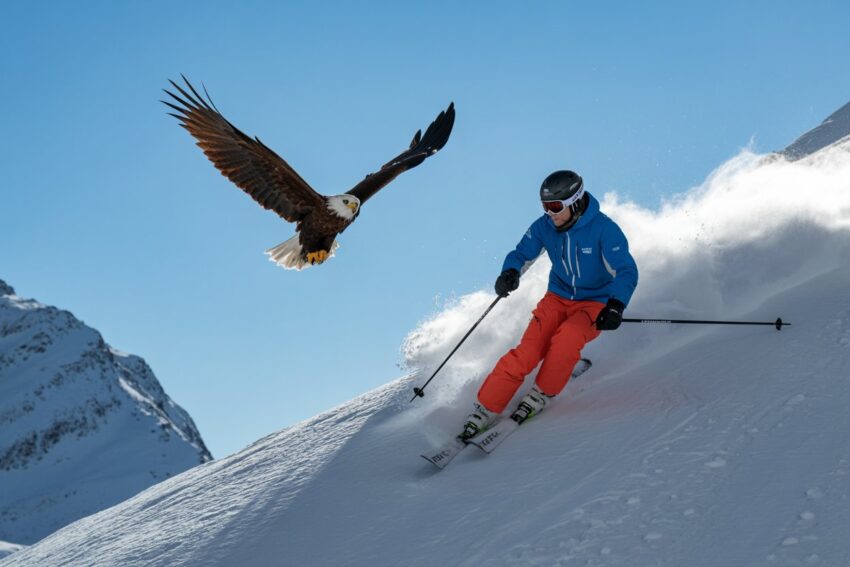Italy, Switzerland, and Austria Face Soaring Ski Pass Prices as Europe’s Winter Tourism Turns into a Luxury Experience

Europe, home to some of the world’s most spectacular alpine landscapes — is facing an unprecedented shift in its winter tourism economy. The continent’s premier skiing nations — Italy, Switzerland, Austria, and France — are witnessing dramatic price increases across ski resorts, as lift tickets and ski passes soar far beyond inflation. The cost of skiing, a traditional European pastime and global tourist draw, has risen by 34.8% above inflation since 2015, placing increasing strain on families, adventure travelers, and even domestic tourists.
From the Italian Dolomites to the Swiss Alps and the Austrian Tyrol, visitors are now confronting price hikes that, for many, redefine skiing as an elite experience. Resorts such as Zermatt, Cortina d’Ampezzo, and St. Anton are reporting steep increases in ski pass prices, citing energy costs, operational expenses, and post-pandemic recovery efforts. For travelers, the question is no longer whether Europe offers the best slopes — but whether the slopes remain accessible.
In Italy, prices for the Dolomiti Superski pass and other premier ski areas have jumped up to 40% compared to 2021. Meanwhile, Switzerland’s Zermatt remains Europe’s most expensive ski destination, with daily passes averaging €108. Across Austria’s alpine belt, daily passes are up 34% over the past few years. This sharp upward trend not only threatens affordability but also reshapes the future of European winter tourism — forcing travelers to reconsider how, where, and for how long they ski.
As Europe’s iconic winter destinations prepare for another season, industry observers warn that the rising cost of ski holidays could fundamentally alter the character of the continent’s mountain tourism — pushing some travelers to explore cheaper Eastern European resorts or alternative winter experiences.
Why Europe’s Ski Pass Prices Are Skyrocketing
The steep increase in ski pass prices across Europe’s winter destinations highlights structural and economic pressures within the industry.
- Italy, Switzerland, and Austria have seen average ski pass costs surge between 30% and 40% since 2021.
- Inflation-adjusted data shows overall ski costs rising 34.8% above inflation since 2015, marking the highest price jump in decades.
- Top-tier resorts like Zermatt (Switzerland) and Dolomiti Superski (Italy) now charge over €85–€100 per day for adult ski passes.
- Resort operators cite energy prices, snowmaking costs, and lift maintenance as key drivers of the surge.
- Families and budget travelers face mounting difficulty affording week-long stays in Europe’s traditional ski centers.
Key Destinations Affected
Italy – Dolomites and Apennines
Italy, traditionally one of Europe’s most accessible skiing destinations, is experiencing a wave of cost increases that has reshaped its winter tourism market. The Dolomiti Superski pass, which offers access to 12 interconnected resorts, now costs around €86 per day, a steep rise compared to 2021. Resorts in Roccaraso and Cervinia have also implemented hikes, citing operational costs and sustainability investments.
Seasonal ski passes now range from €755 in Roccaraso to as high as €1,800 in the Aosta Valley. The Italian ski industry — a cornerstone of the country’s northern economy — is facing mounting criticism as affordability concerns rise. However, Italy continues to promote its alpine regions for their hospitality, food culture, and family-friendly appeal.
Switzerland – Zermatt and Beyond
In Switzerland, long recognized as Europe’s luxury skiing capital, Zermatt remains the most expensive resort with daily lift passes surpassing €108. Other destinations such as Verbier, St. Moritz, and Davos also rank among Europe’s priciest. While the Swiss model prioritizes premium experiences and high-end infrastructure, smaller resorts are struggling to attract cost-conscious visitors.
Austria – Tyrol and Salzburg
Austria’s alpine resorts are also reporting significant price increases, averaging 34.3% above pre-2019 levels. Resorts in Tyrol, Salzburg, and Carinthia are investing heavily in artificial snow systems to combat climate volatility, driving up energy costs and maintenance fees. Despite the hikes, Austria remains a top choice for international travelers due to its ski schools, après-ski culture, and accessibility.
The Economic Impact on Winter Tourism
Europe’s ski tourism industry generates billions of euros annually and supports hundreds of thousands of seasonal jobs. However, the soaring costs of skiing could lead to:
- A decline in middle-income visitors, especially from the UK, Germany, and Eastern Europe.
- A shift toward shorter stays or off-season skiing to manage expenses.
- Increased popularity of affordable destinations such as Bulgaria, Slovenia, and Romania.
- Greater emphasis on luxury travel packages, catering to higher-spending guests.
Tourism ministries in Italy, Austria, and Switzerland are closely monitoring consumer demand, as rising costs may threaten repeat visitation. The ripple effect could extend to hotels, restaurants, and equipment rental companies that rely heavily on consistent skier footfall.
The Role of Climate and Energy Costs
Beyond economics, climate change has become an invisible driver of ski price inflation. Resorts across the Alps increasingly depend on artificial snowmaking, which significantly raises energy use. The 2022–23 winter season saw particularly high energy prices across Europe, exacerbating resort operational costs.
As natural snowfall patterns become less predictable, resorts must invest more heavily in snow technology, lift modernization, and slope safety — costs that inevitably pass down to visitors. Some resorts, particularly in the Dolomites and the Tyrol region, are investing in renewable energy projects to offset these challenges, though this transition may temporarily elevate operational expenses.
Changing Consumer Behavior
European travelers are adapting their habits in response to rising ski pass prices:
- Many are booking shorter trips — typically three to five days instead of full weeks.
- Families and youth groups are seeking budget-friendly resorts in Eastern Europe or Scandinavia.
- The concept of multi-resort passes (like the Alps-wide Ski Pass or Dolomiti Superski) is losing appeal as per-day costs outpace value.
- Some tourists are switching to alternative winter experiences such as snowshoeing, wellness retreats, or alpine hiking.
Travel analysts predict that price-sensitive travelers will increasingly gravitate toward mid-range resorts in France’s Savoie, Slovenia’s Kranjska Gora, or Bulgaria’s Bansko, where lift-pass prices remain under €40.
Regional Breakdown of Average Daily Ski Pass Prices (2025)
- Switzerland (Zermatt, Verbier) – €108
- Italy (Dolomites, Aosta Valley) – €86
- Austria (Tyrol, Salzburg) – €74
- France (Chamonix, Val d’Isère) – €68
- Bulgaria (Bansko) – €37
(Source: European Travel Index, 2025)
How the Industry Is Responding
Resorts across Europe are deploying new strategies to retain and attract visitors despite escalating prices:
- Dynamic pricing models: Ski passes now vary by day, time, and crowd levels.
- Digital ski apps: Offering real-time weather data, slope maps, and mobile discounts.
- Sustainability programs: Resorts adopting renewable energy to lower long-term costs.
- Family-friendly offers: Free or discounted passes for children and group bookings.
- Wellness tourism integration: Ski resorts adding spa and health experiences to diversify offerings.
Some regional governments, particularly in Italy and Austria, are also considering tourism subsidies or incentives to make winter travel more accessible for domestic tourists.
The Future of Skiing in Europe
Europe’s ski tourism industry stands at a crossroads. While rising costs challenge affordability, they also reflect the continent’s effort to maintain world-class infrastructure, ensure safety, and promote environmental resilience. The next decade may see:
- A gradual shift toward sustainable winter tourism and smaller-scale ski resorts.
- Greater collaboration among European destinations to harmonize pricing and marketing.
- Increased eco-certification for resorts meeting climate-friendly standards.
- Wider adoption of digital ticketing and loyalty programs for repeat travelers.
Tourism boards in Italy, Austria, and Switzerland are already rebranding winter holidays as “premium yet responsible” experiences — positioning the Alps not merely as ski zones but as year-round lifestyle destinations.
Key Takeaways
- Europe’s ski-pass prices have surged 34.8% above inflation since 2015.
- The most affected destinations include Italy’s Dolomites, Switzerland’s Zermatt, and Austria’s Tyrol region.
- Rising energy, climate costs, and infrastructure investments drive much of the inflation.
- Budget travelers are exploring Eastern Europe for affordable ski options.
- Resorts are innovating through dynamic pricing, family packages, and eco-tourism efforts.
Conclusion
The European ski industry is experiencing one of its most pivotal transitions in decades. With ski pass prices soaring, Italy, Switzerland, and Austria must strike a delicate balance between maintaining profitability and preserving accessibility for global visitors. While some travelers may turn away from traditional Alpine destinations, others will embrace the challenge — investing in quality, sustainability, and once-in-a-lifetime experiences.
As the snow settles over the Dolomites, Tyrol, and the Swiss Alps, one thing is clear: the landscape of European skiing is changing. The price of admission to the continent’s iconic slopes is climbing higher than ever, and the future of winter tourism will depend on how well Europe adapts — balancing the luxury of its mountains with the inclusivity of its visitors.
The post Italy, Switzerland, and Austria Face Soaring Ski Pass Prices as Europe’s Winter Tourism Turns into a Luxury Experience appeared first on Travel And Tour World.



